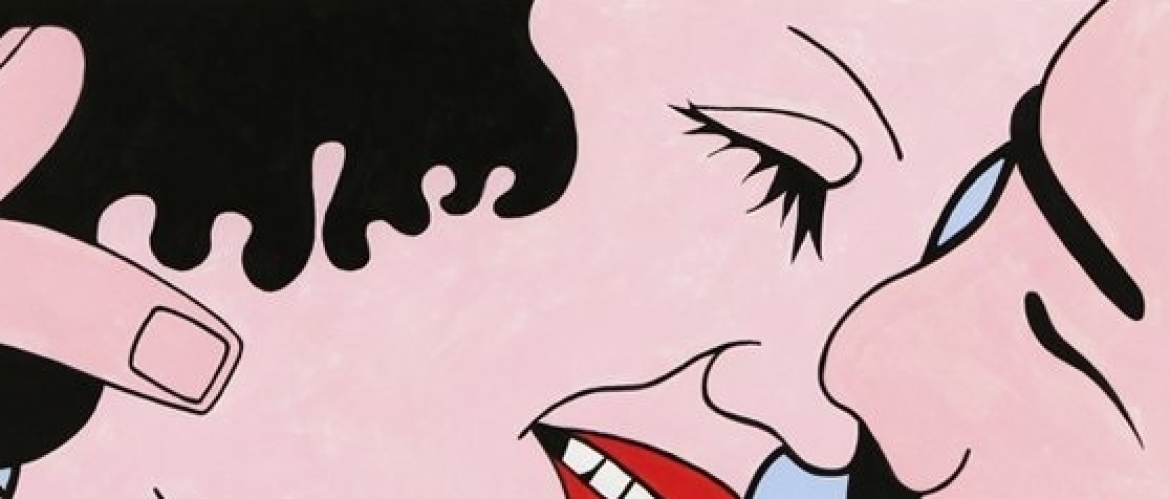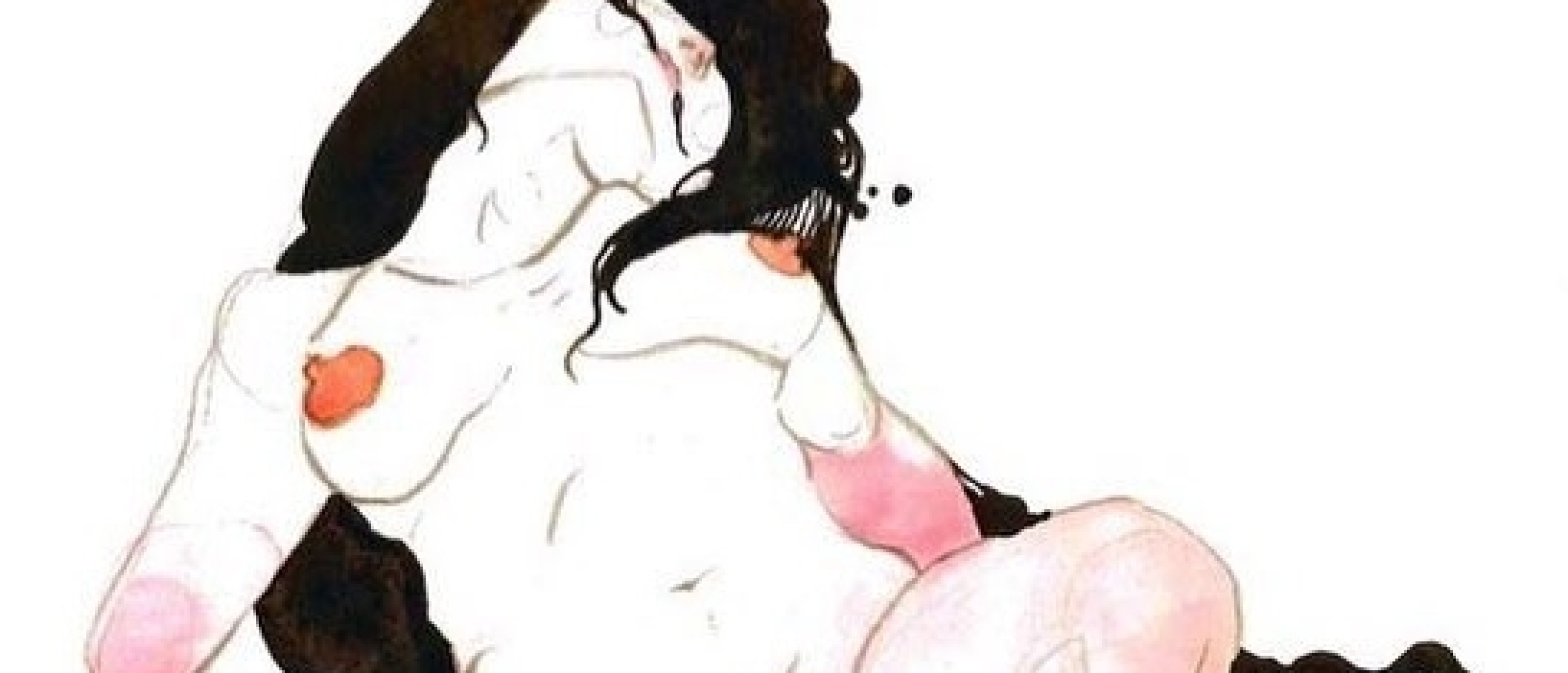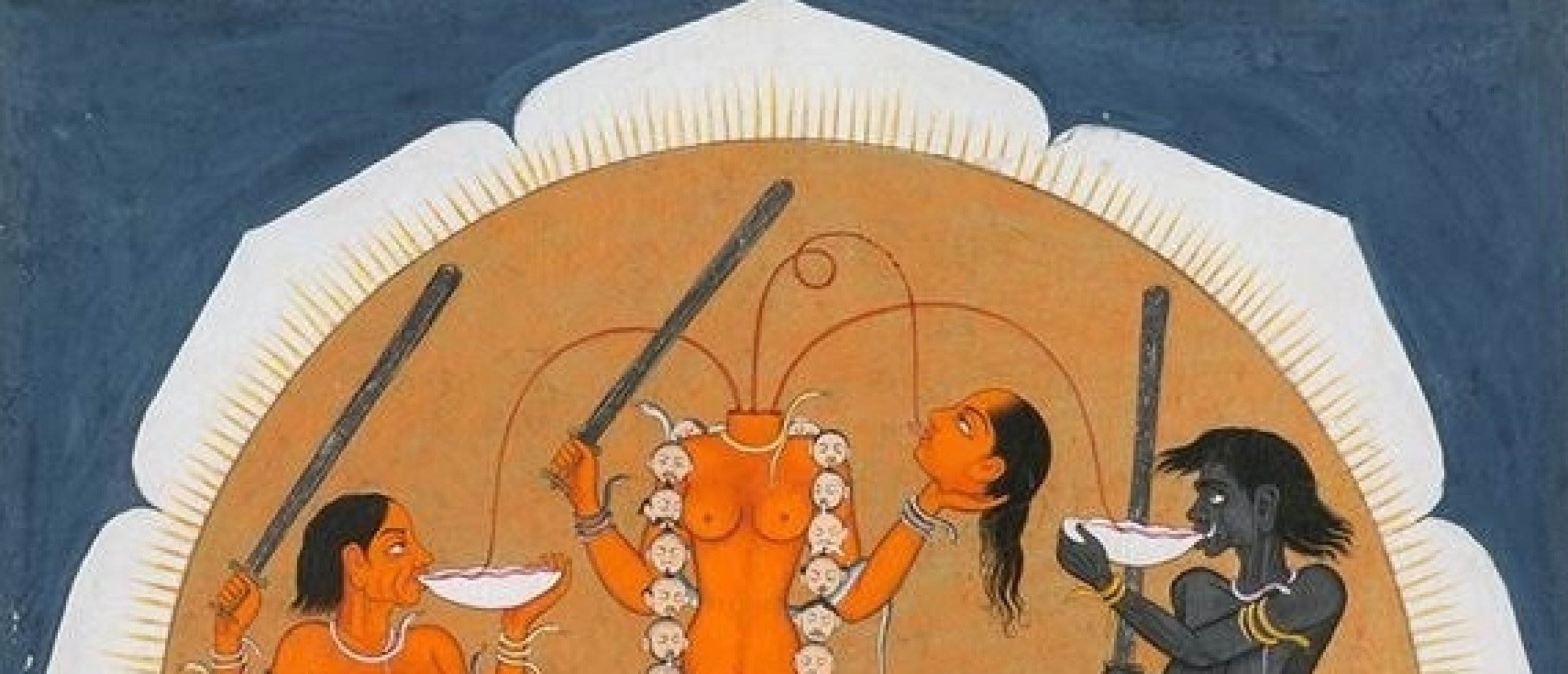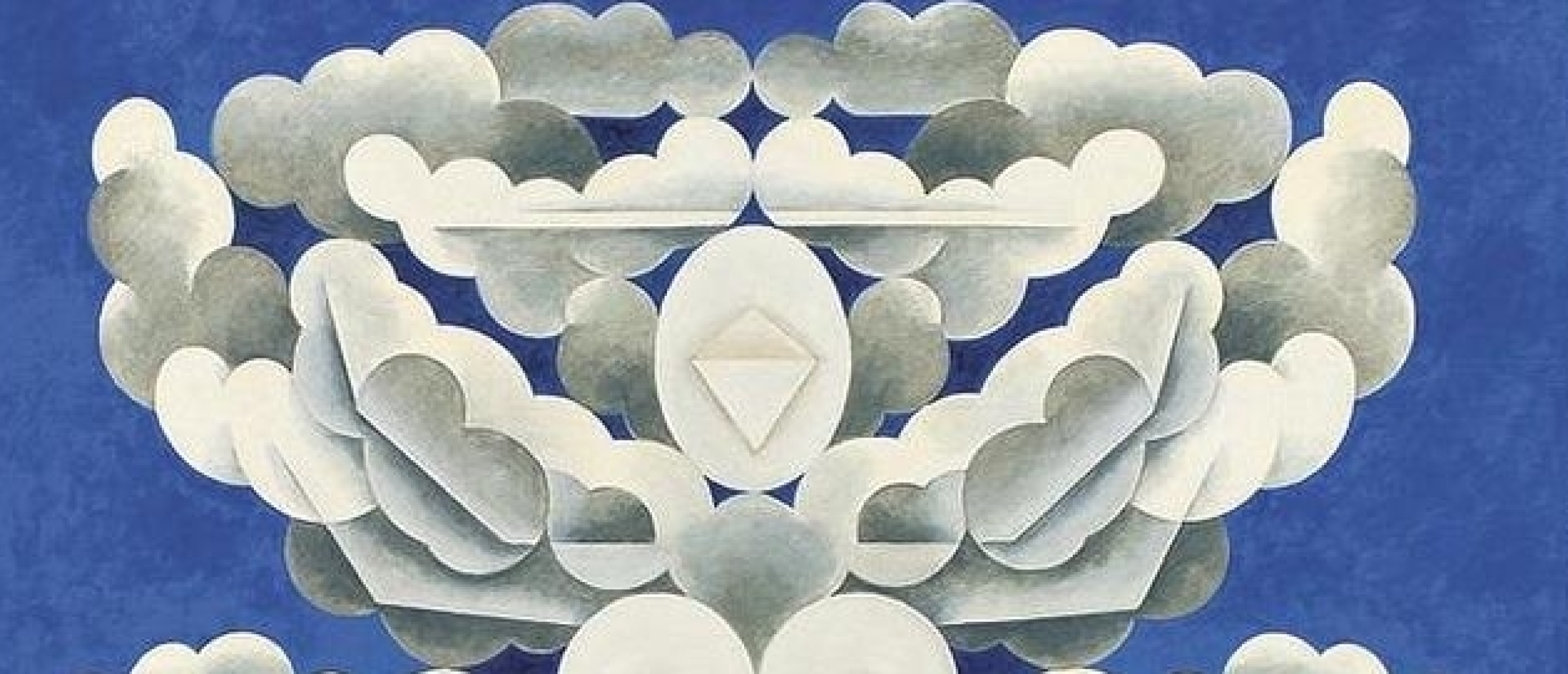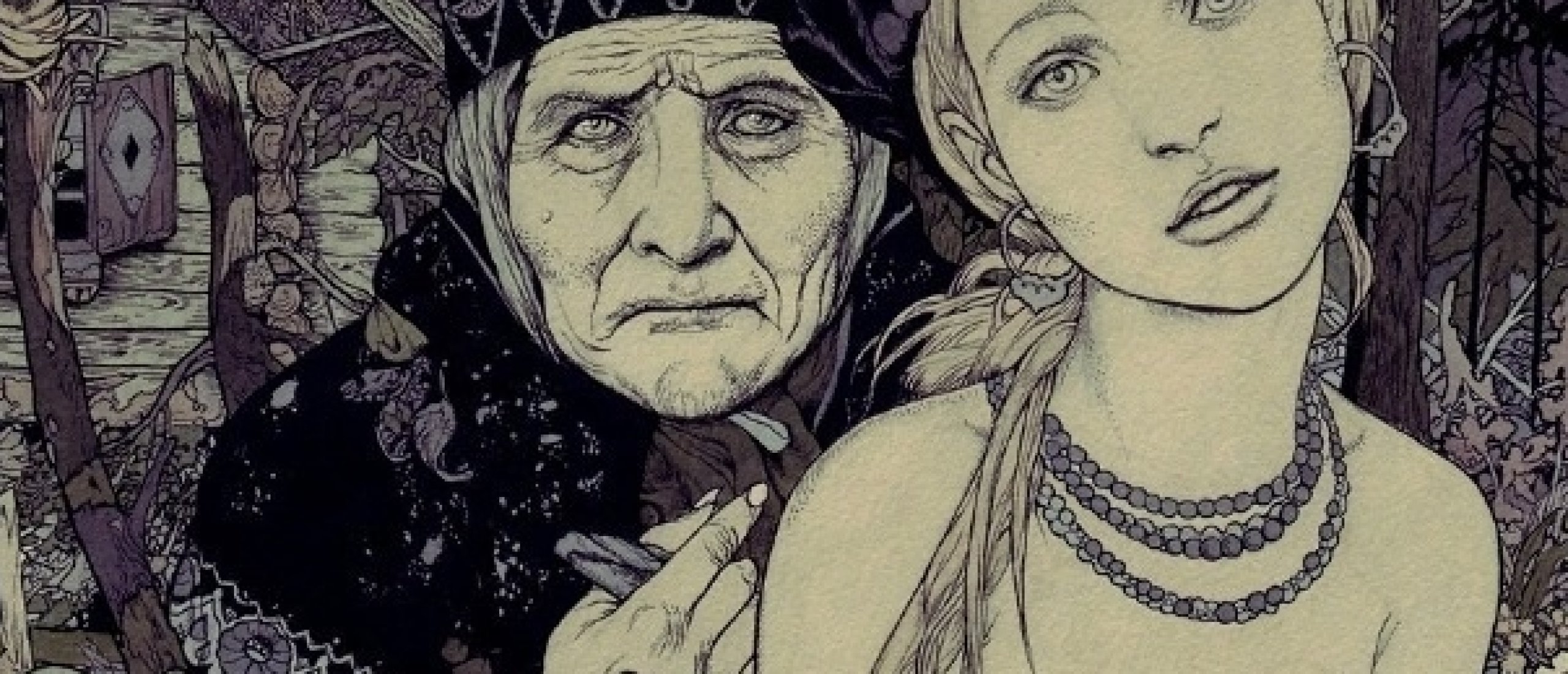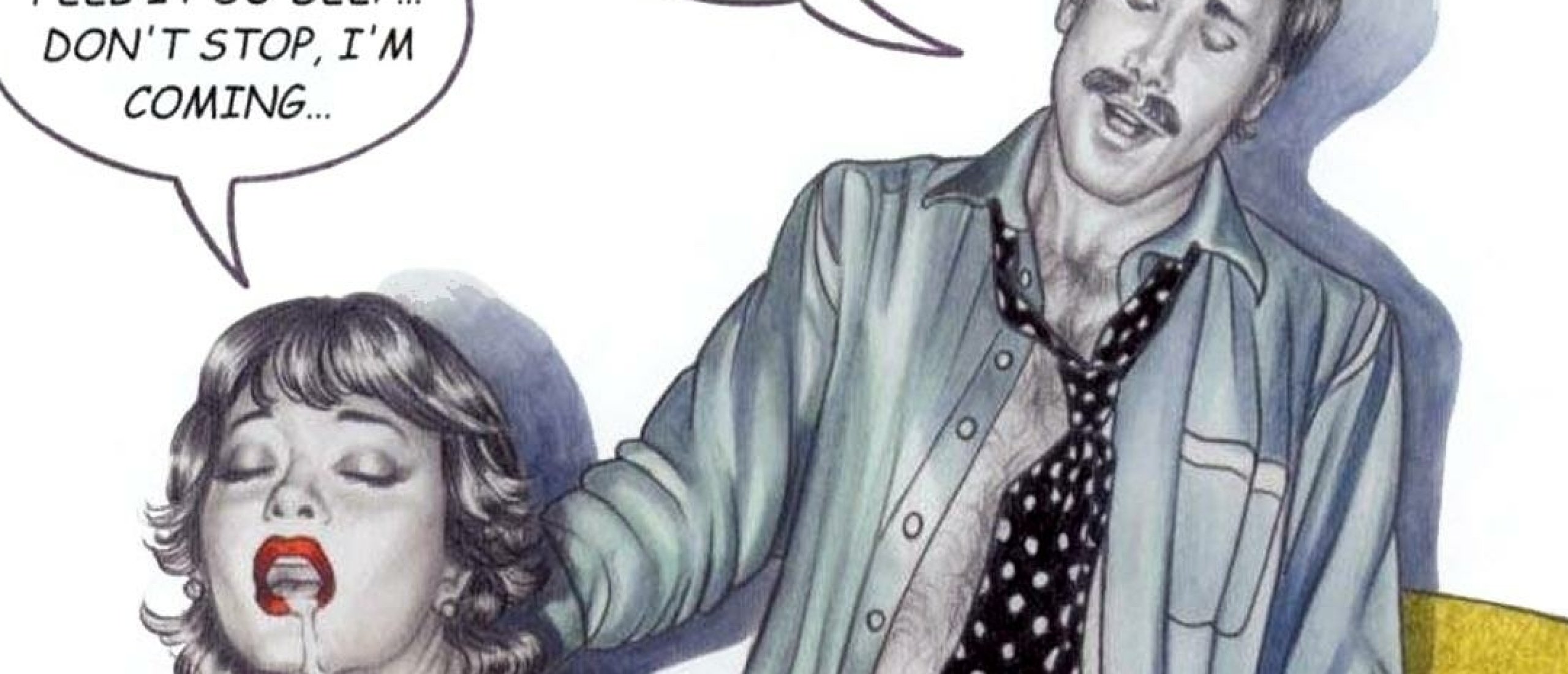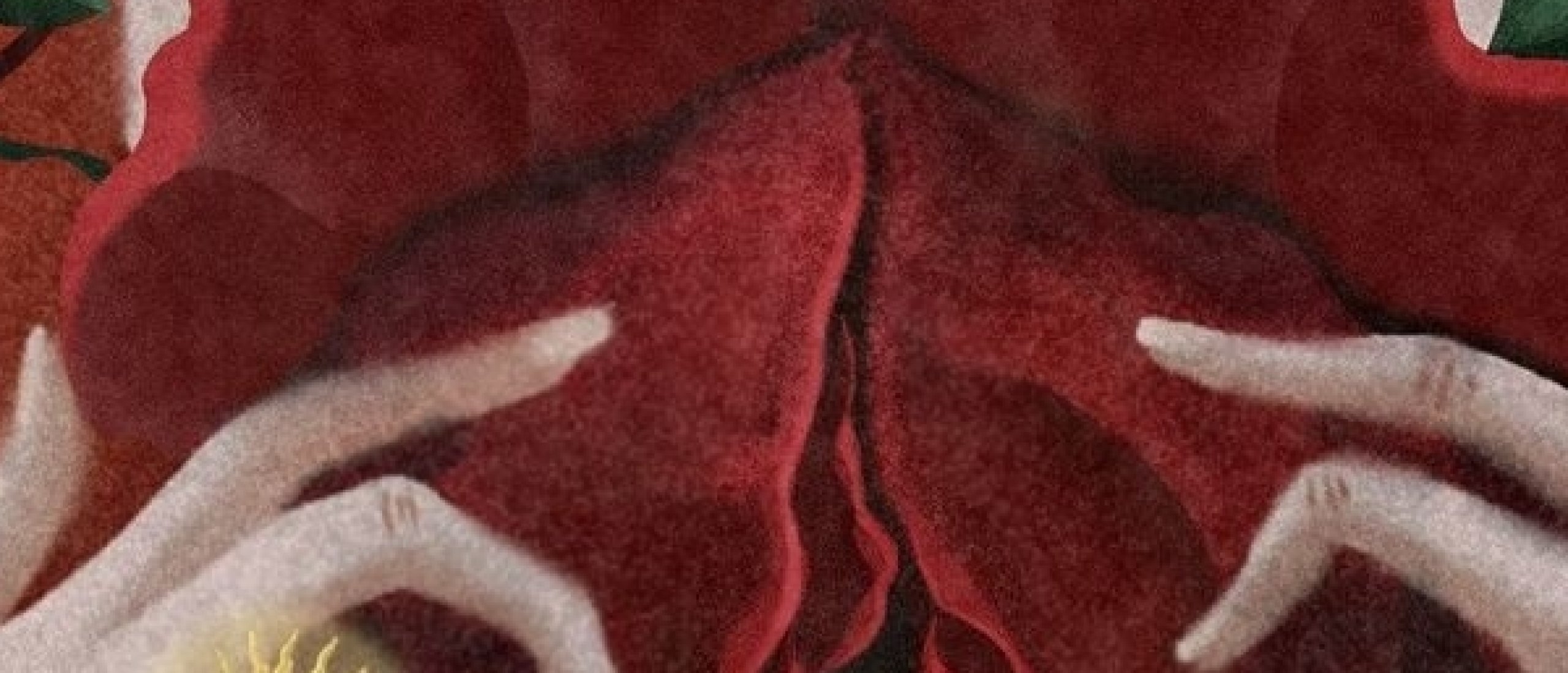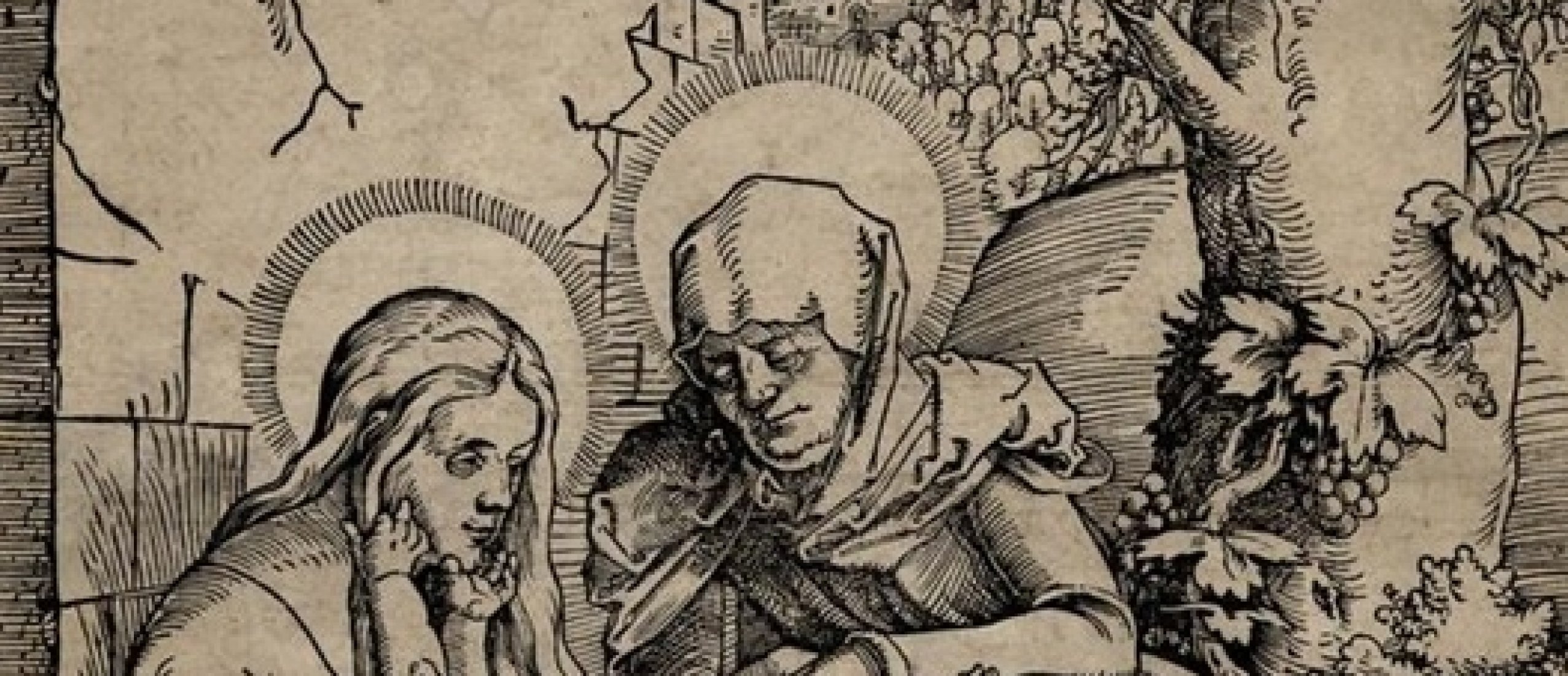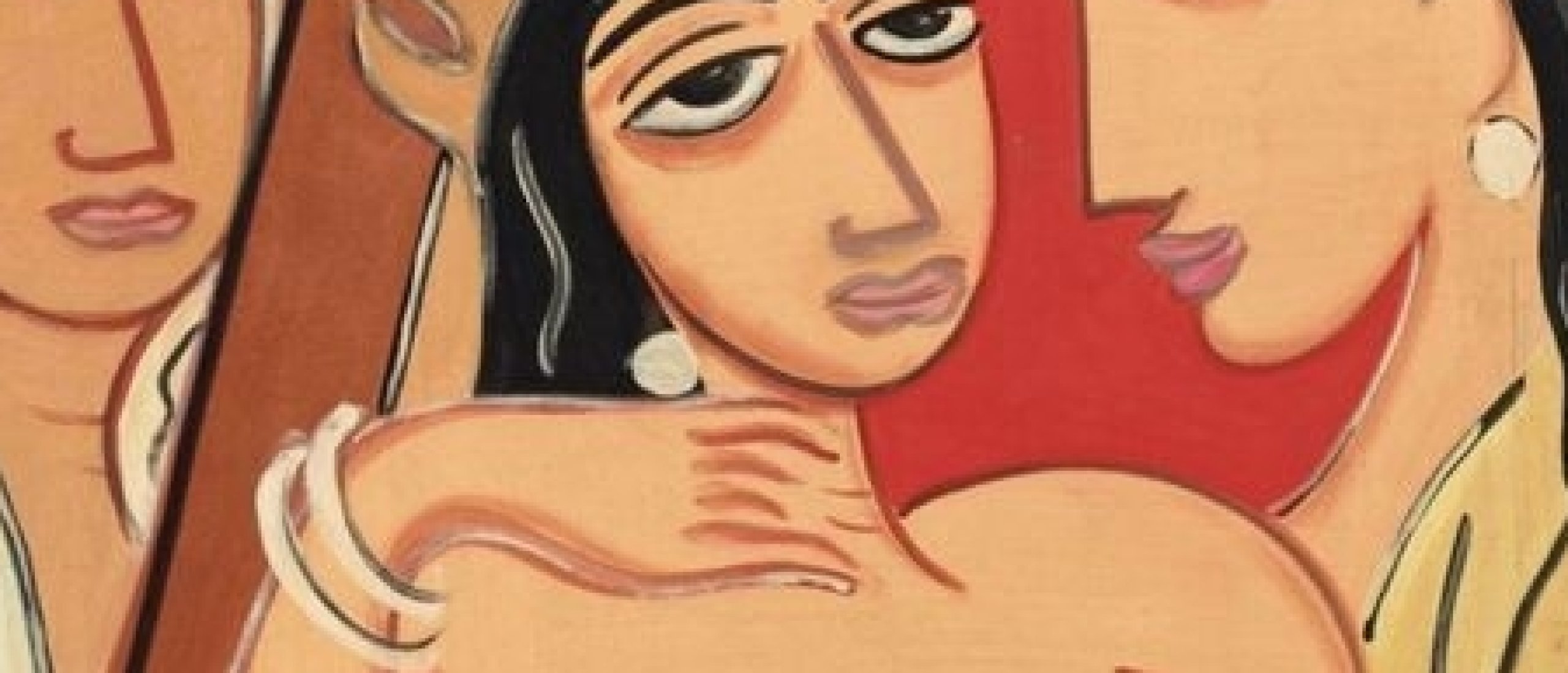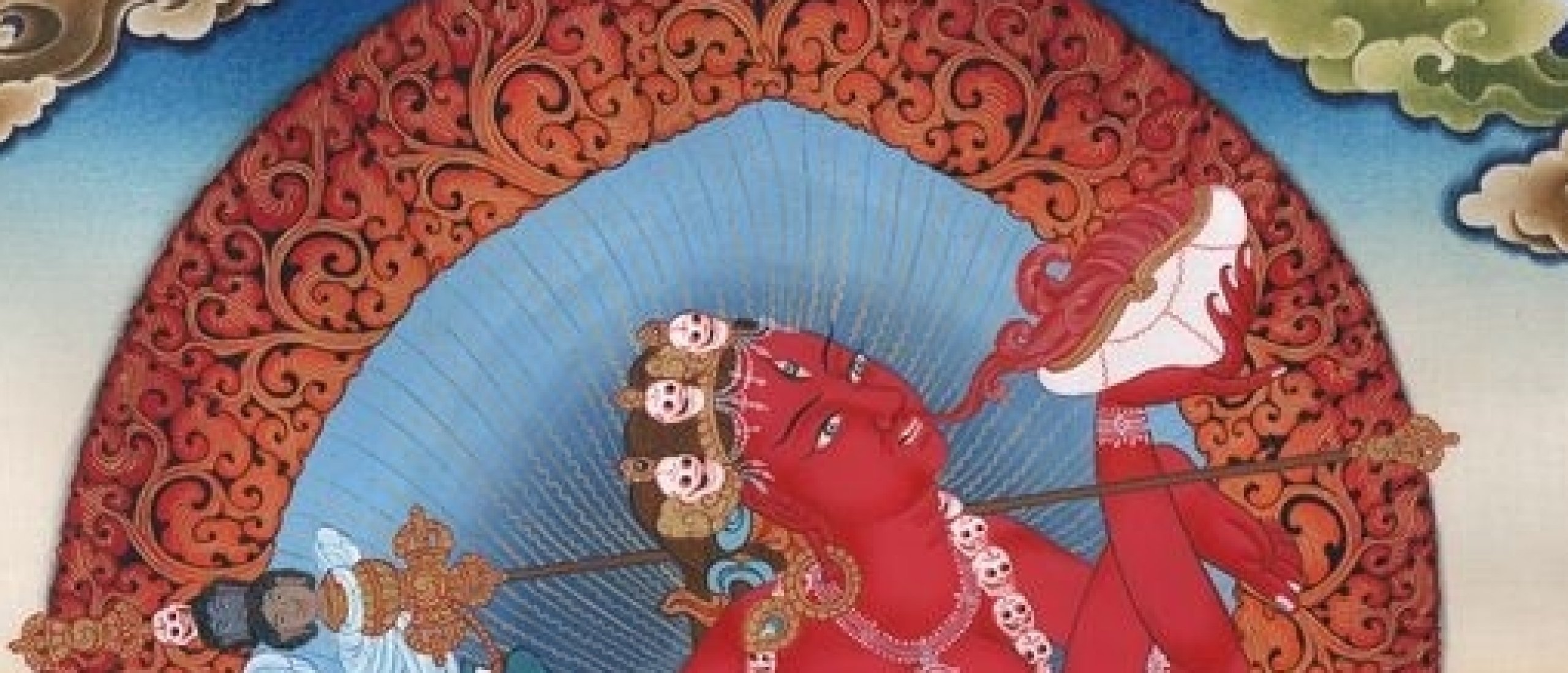
Bridging to the Other self
The experience of viewing Tantric Buddhist art carries the observer to a twilight realm, rich with multiple meanings. Through their liminal effect, these Tantric paintings challenge viewers to solve a riddle by observing the teachings they convey. The painting’s contrasting deities evoke conflicting emotions and feature an explicit sexual theme. Tantra goes beyond conventional boundaries to explore intimacy as the ultimate manifestation of bliss. These paintings encourage viewers to contemplate nonduality. In Vajrayana Buddhism, practitioners hold the belief that enlightenment can be attained within one lifetime, without the requirement of a rigid plan. The Sanskrit term Vajrayana, when translated, signifies “diamond” or “thunderbolt” vehicle. Tantric Buddhist paintings transport viewers into a contemplative space of deeper understanding.
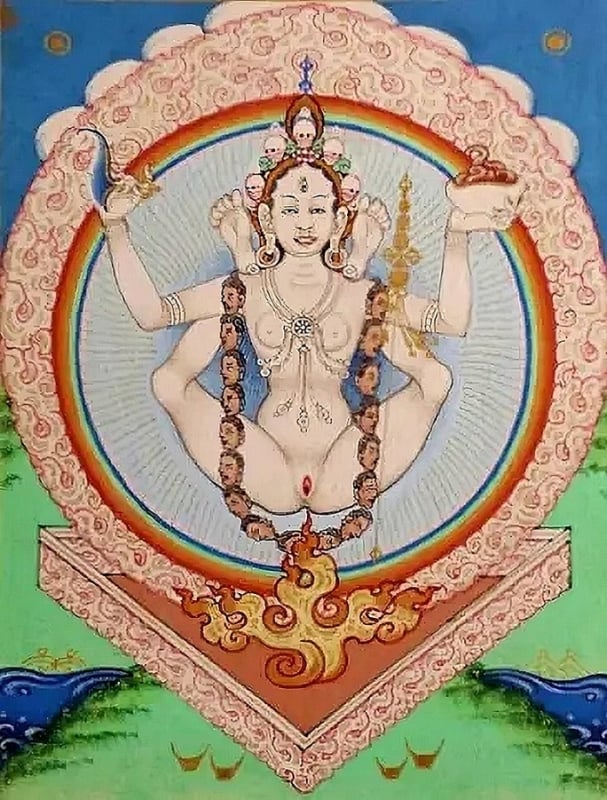
Fig 1. Vajrayogini, Mongolia 1900-1959
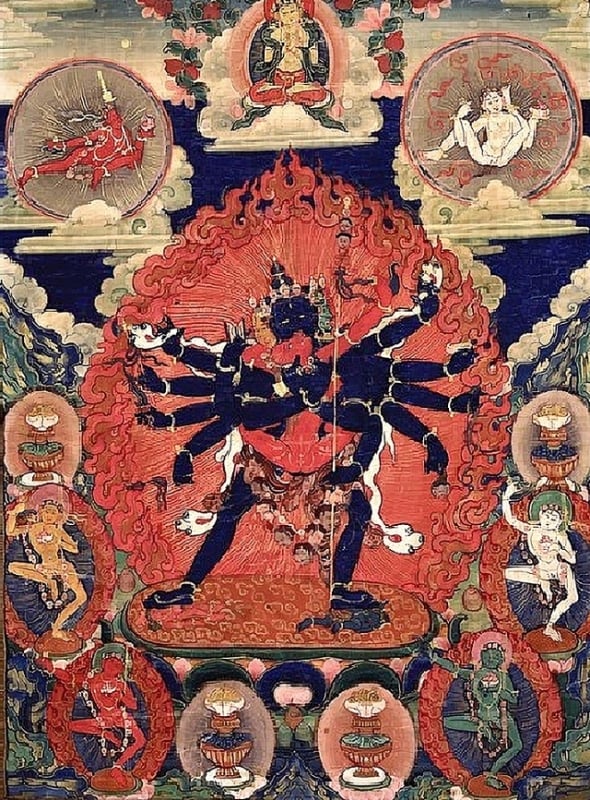
Fig 2. Example of Cakrasamvara and Karmamudrā
Thangka Painting
The Thangka has its roots in Tibet, where it was first developed in the 8th century. This visual representation follows a formula that expresses the interior symbolism or Twilight language of Tibetan Buddhism. The process of making canvas involves stretching out cotton fabric. By mixing a fine white pigment with ingredients collected from Yak skin, the artist creates gesso for the canvas. Only when a stone is used to smooth the surface can the sketching begin. With a grid, every line, circle, and angle meets high geometric standards. The sketch is crucial and when painted, evokes a feeling of a timeless image.
There are sixteen fundamental colors that the artist employs in their palette. The application process starts with blue, then green, and finally the artist adds other colors. Gold and silver dust give the paint a luminous appearance. After the painting has dried, they cut it off the stretcher. To complete a flowing light effect, the artist uses a heated pen to trace the metal highlights. After that, they mount the artwork on different material and display it as a scroll. It can take several months to a year to complete a Thangka, depending on its size.
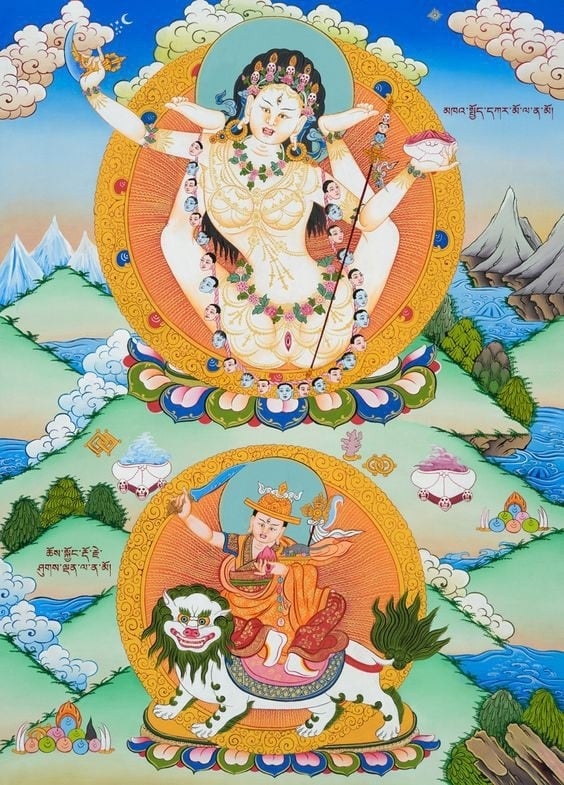
Fig. 3 Example of Contemporary Vajravarahi
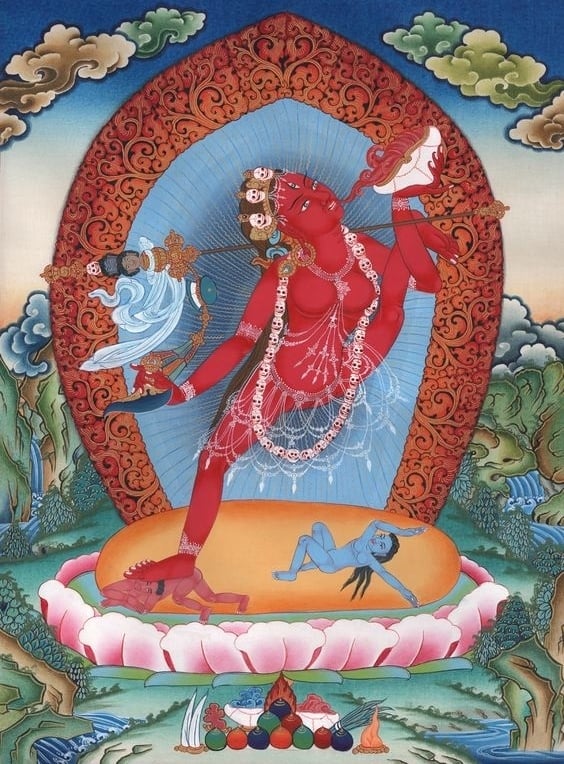
Fig 4. Example of Contemporary Vajrayogini, Nepal
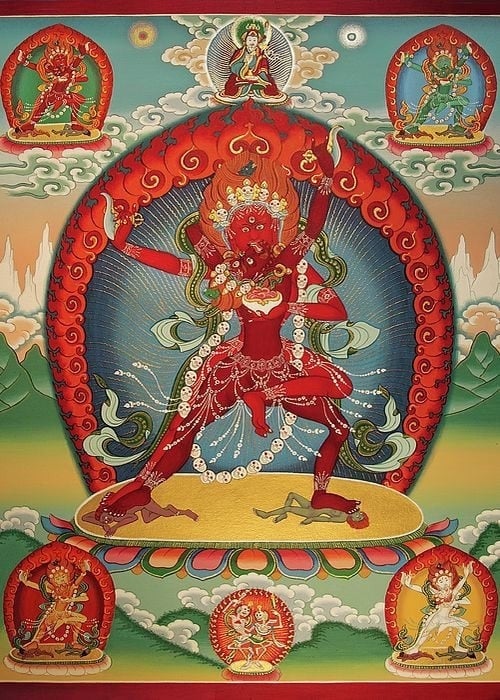
Fig 5. Example of Contemporary Vajrayogini

Fig 6. Chakras and energy channels_– Tibet
Vajrayogini
The ḍākinī is a female spirit that is both semi-peaceful and semi-wrathful. She represents the path to Buddhahood through cognition. Vajrayogini is the goddess associated with the ḍākinī, embodying this concept. Her name in Tibetan is Dorjé Naljorma. She is a guiding component of Cakrasamvara Tantra.
Cakra or Chakra is a term that describes the symbolic representation of a wheel that encompassesdifferent dimensions of life. This theory and practice of the wheels originated in India between 1500 and 500 BCE in the Vedas. Intially described as vortices, the wheels branch out. This network, called Nāḍī, transports the life force known as prana. The wheels function as a map, overlaying organs that produce electric current from a live thunderbolt within the spine.
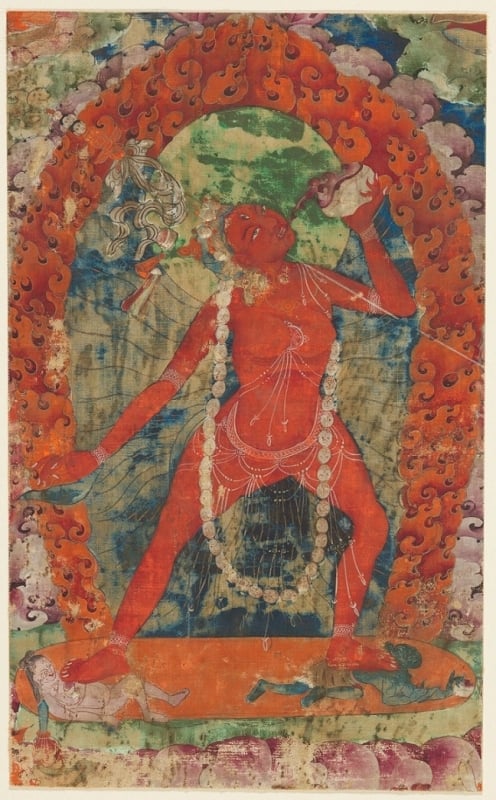
Fig 7. Drinking from Skull Cup (Vajrayogini) 19th century. President and Fellows of Harvard College
In the deluxe Premium version of the article you can discover more about the numerous forms the Vajrayogini deity female is embodied, detailed descriptions of the portrayed deities, the Yab-yum pose, the erotic Buddhist method called Karmamudrā and (MUCH) more...
Click HERE for the sacral sensuality in works of French Symbolist Odilon Redon


